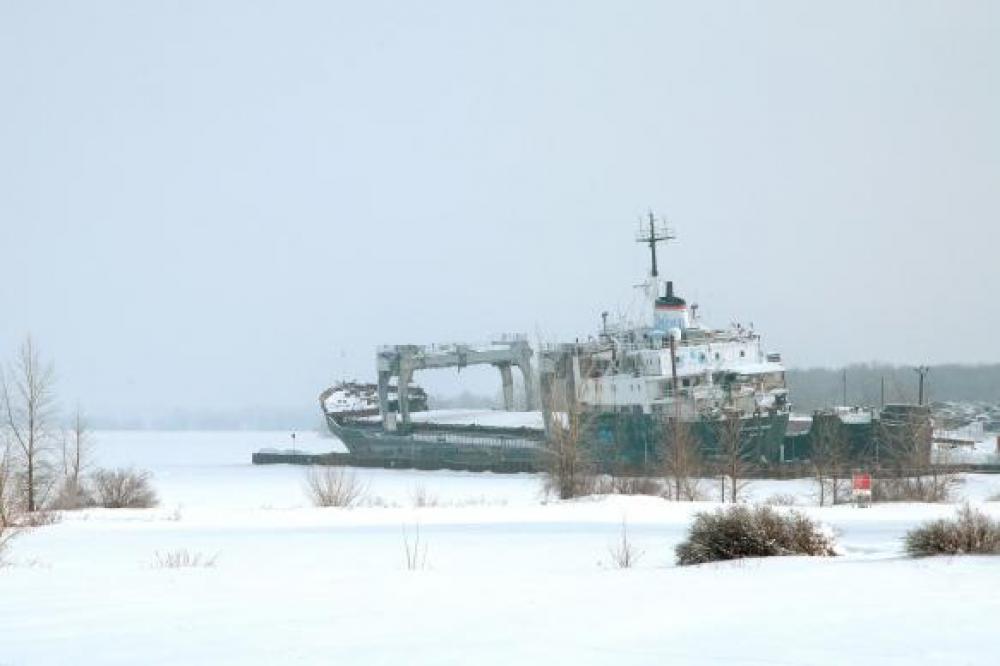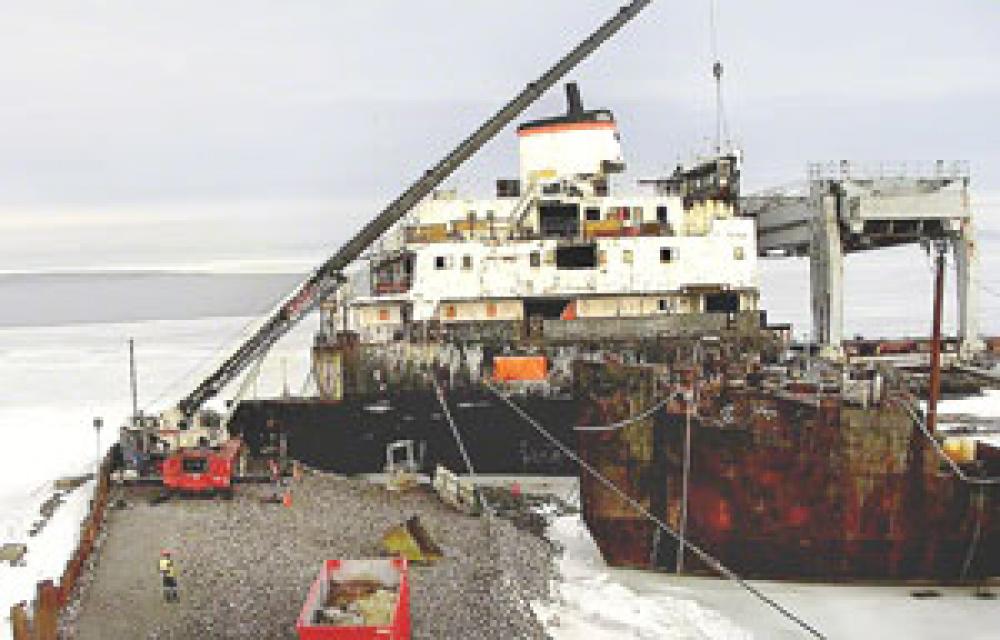
Kathryn Spirit: The Role of Environmental Response Officers
The stabilization and dismantling of the vessel Kathryn Spirit are complex operations that have required and will continue to require considerable coordination among a number of federal, provincial and municipal stakeholders. The priorities of the Canadian Coast Guard and all its partners are first and foremost to ensure workers’ safety during the dismantling, to protect the environment and to communicate with partners and coastal communities.
An abandoned vessel
Built in 1967, the Kathryn Spirit is a Canadian cargo ship that primarily navigated Canadian waters to transport various types of goods. At the end of its useful life, it was sold to local interests to be dismantled in Beauharnois and was then resold in the meantime to a foreign company that went bankrupt and was ultimately abandoned on site in November 2015. The following spring, a drop in the water levels of Lac Saint-Louis caused the vessel to run aground and list sharply. The Coast Guard then noticed that water had entered the vessel’s compartments. Under the conditions, it became very difficult to predict its behaviour.
Stabilization
Given the situation, the Canadian Coast Guard intervened quickly to prevent the vessel from capsizing and polluting its environment. Thanks to the knowledge and experience of its environmental response officers, an action plan was developed to prevent marine pollution. The plan involved implementing measures to reduce the consequences for public safety and the environment as much as possible.
Various spill scenarios were developed, and mitigation measures were identified. Response teams with spill control equipment were mobilized at the site. First, floating barriers were installed around the vessel to minimize the impact if a spill were to occur. Then, hydrocarbons floating on the surface in the flooded compartments were collected to reduce the potential risk of a spill. In addition, to stabilize the vessel, a contract was awarded to a firm specializing in marine salvage to install steel cables held by a ground anchor system and two spud barges on the shore of Lake Saint-Louis.
After that, an emergency structure had to be built around the vessel to isolate it from the lake, stabilize it against fluctuations in water levels and the presence of ice and create access for its dismantling. All of the required efforts were made for this project:
- performing technical analyses;
- assessing environmental impacts;
- obtaining the necessary authorizations and permits;
- implementing protective measures;
- building the structure on the shore before the rise in water levels due to spring flooding.
The project team opted to construct a rock embankment with a sheet pile wall, for which a contract was awarded in November 2016 and completed in February 2017.
Dismantling
In October 2017, a company was selected to dismantle the Kathryn Spirit. The vessel will be dismantled by October 2018, and the embankment will be removed by December 2018. Lastly, the site will be restored and returned to its original state, as it was before the vessel arrived in Beauharnois, by spring 2019 at the latest. At each stage of the process, the Canadian Coast Guard has remained in contact with its federal, provincial and municipal partners and the Mohawk Council of Kahnawake to ensure that the work is coordinated effectively.
Martin Blouin
Canadian Coast Guard

The Kathryn Spirit is a Canadian cargo ship that was abandoned in 2011 on the shore of Lake Saint-Louis in Beauharnois.

Dismantling of the Kathryn Spirit began a few weeks ago. The cutting operations—underway in the photo—will make it possible to reclaim the metal for resale.





